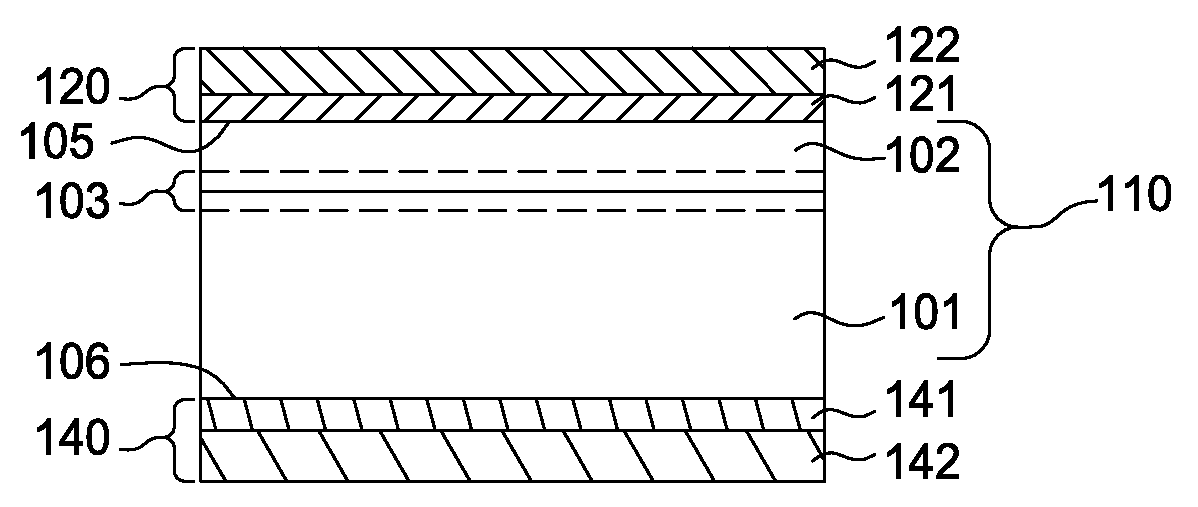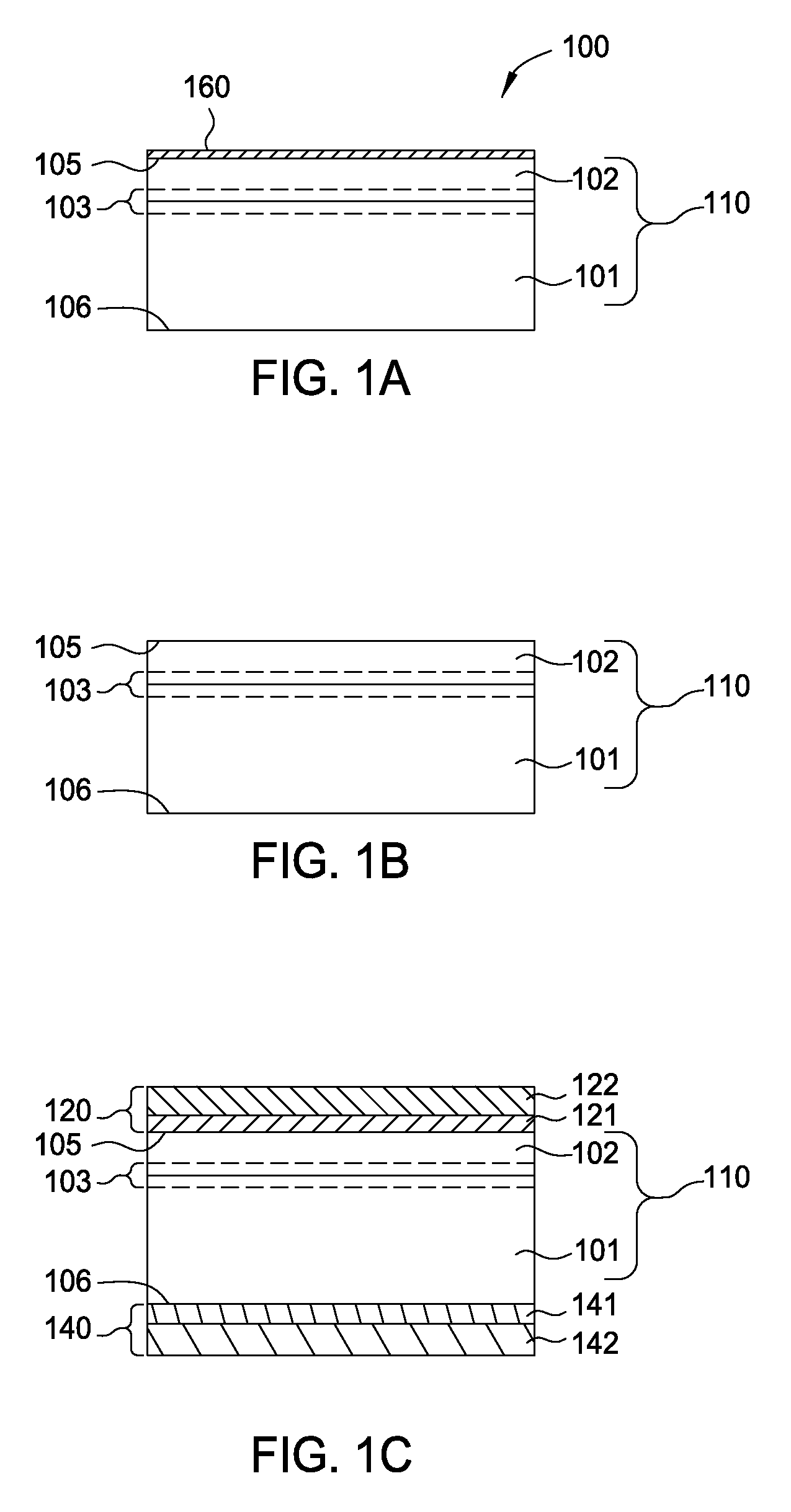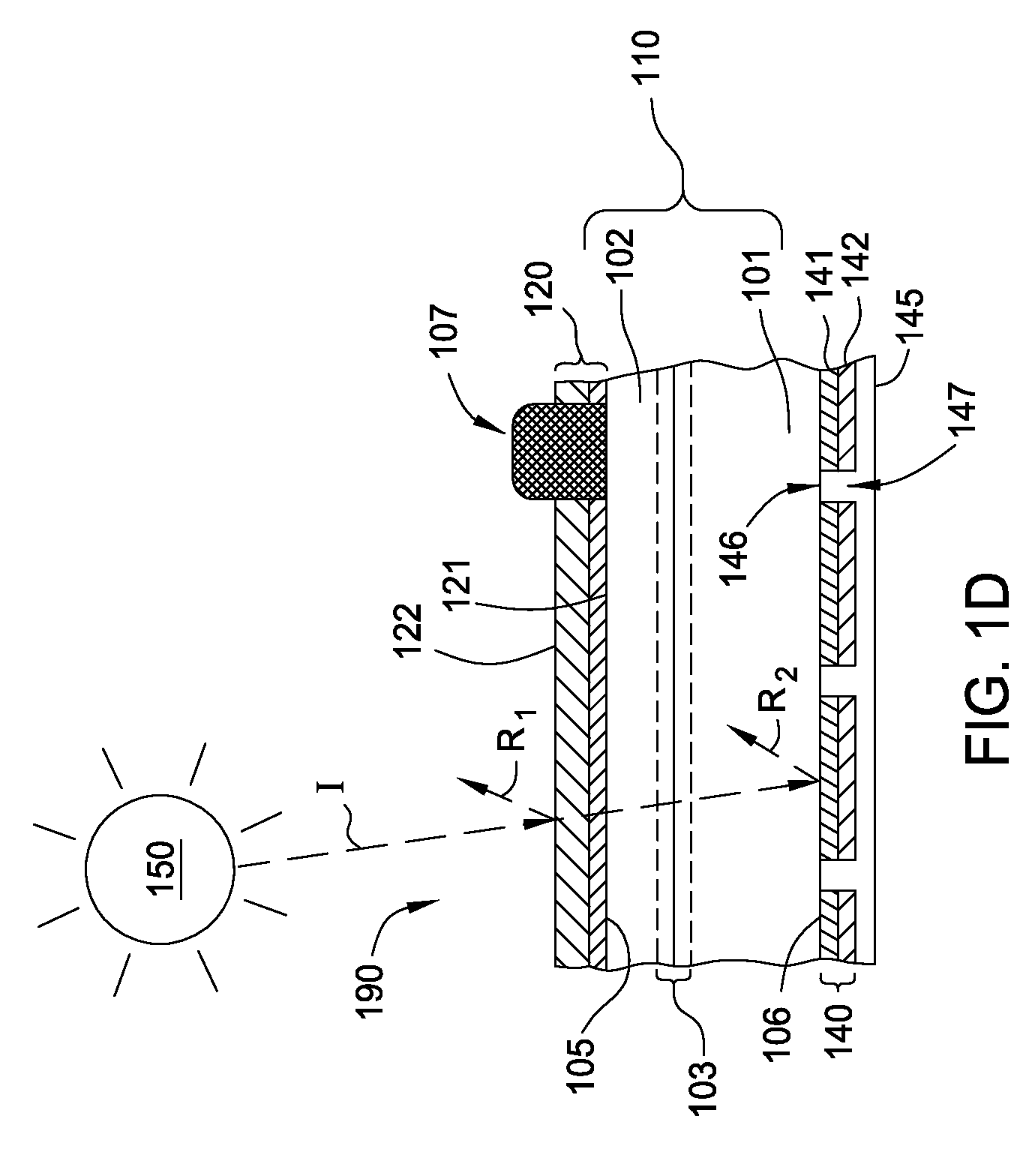In situ silicon surface pre-clean for high performance passivation of silicon solar cells
a solar cell and silicon surface technology, applied in the field of photovoltaic device fabrication, can solve the problems of reducing the efficiency of the solar cell, and undesirable electrical short circuit of the shunt curren
- Summary
- Abstract
- Description
- Claims
- Application Information
AI Technical Summary
Benefits of technology
Problems solved by technology
Method used
Image
Examples
examples
[0065]The following non-limiting examples are provided to further illustrate embodiments described herein. However, examples are not intended to be all inclusive and are not intended to limit the scope of the embodiments described herein.
[0066]Samples #1-3 were performed on p-type CZ silicon bare wafers in an AKT-5500 PECVD chamber available from Applied Materials. The bare wafers were exposed to a hot-pass process to expose the wafers to possible residual contaminants present in the PECVD chamber. The hot-pass process may be performed with or without lamp heating. Exemplary hot-pass processes include: pre-processing chambers PH2, 330: 20% lamp power, heaters at 650° C.; AlO processing chamber, 340: heaters at 650° C.; transfer chamber PH3, 350: 20% lamp power, heaters at room temperature; SiN processing chamber, 360: heaters at 700° C. The hot-pass process was performed without deposition and without exposure to plasma to monitor the chamber environment. After exposure to the hot-p...
PUM
| Property | Measurement | Unit |
|---|---|---|
| temperatures | aaaaa | aaaaa |
| temperature | aaaaa | aaaaa |
| temperature | aaaaa | aaaaa |
Abstract
Description
Claims
Application Information
 Login to View More
Login to View More - R&D
- Intellectual Property
- Life Sciences
- Materials
- Tech Scout
- Unparalleled Data Quality
- Higher Quality Content
- 60% Fewer Hallucinations
Browse by: Latest US Patents, China's latest patents, Technical Efficacy Thesaurus, Application Domain, Technology Topic, Popular Technical Reports.
© 2025 PatSnap. All rights reserved.Legal|Privacy policy|Modern Slavery Act Transparency Statement|Sitemap|About US| Contact US: help@patsnap.com



